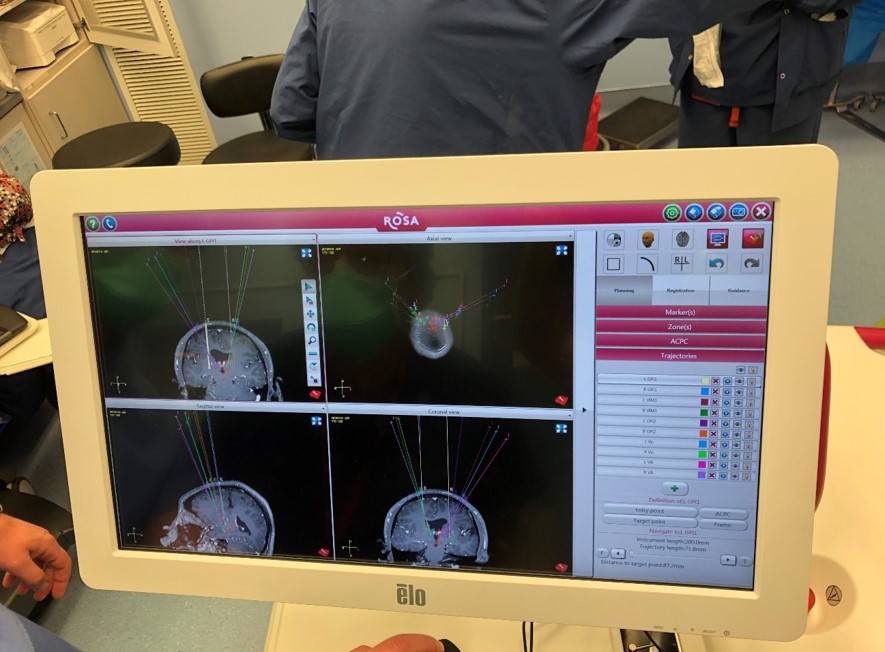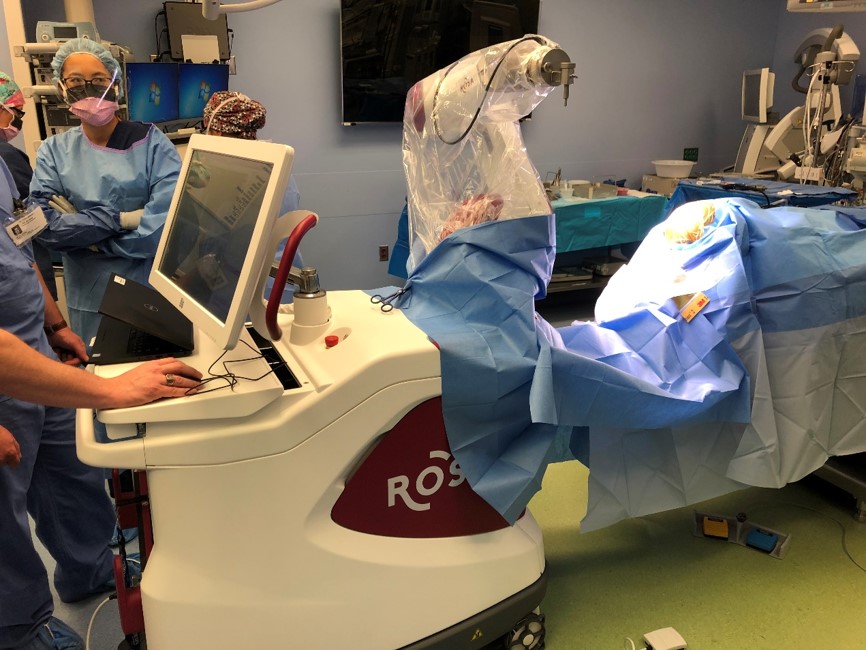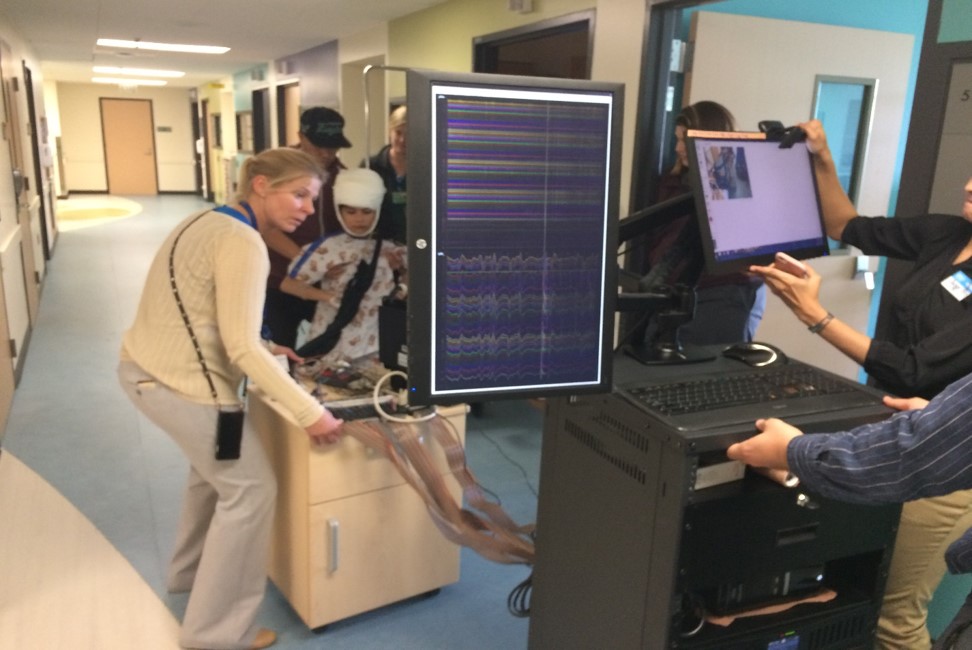Session Information
Date: Tuesday, September 24, 2019
Session Title: Dystonia
Session Time: 1:45pm-3:15pm
Location: Les Muses Terrace, Level 3
Objective: The primary objective of our pediatric clinical research is to improve outcomes after deep brain stimulation for pediatric patients with secondary dystonia. We apply a novel technique using stereotactic depth electrode placement and EMU observation to identify optimal targets.
Background: Deep brain stimulation for secondary dystonia has not achieved the level of efficacy exhibited in DBS therapies for primary dystonia. This may be in part due to differences in injury patterns, potential for plasticity and availability of neuronal tissue for stimulation. Identifying the potential targets for DBS in this heterogeneous group of secondary dystonia patients provides improved outcomes. We present an update of our unique experience with multiple electrodes implanted in basal ganglia targets followed by inpatient neuromodulation unit (NMU) monitoring to identify permanent DBS targets for our quadri-electrode therapy.
Method: A total of 22 atypical secondary dystonia patients,16 of whom underwent stereotactic placement of depth electrodes in the basal ganglia followed by NMU observation and testing are presented with over 6 months of postoperative follow-up. As many as 10 depth electrodes (5 per hemisphere) were placed in basal ganglia targets. During the NMU observation, patients underwent awake stimulation testing and local field potential, evoked potential, and electroencephalographic recording in order to assess best target location for permanent leads.
Results: All patients underwent GPi lead placement in addition to 11 ventralis oralis nucleus leads, 7 ventral intermediate nucleus leads, and three who underwent leads in other thalamic targets (Figure 2). One patient underwent unilateral placement due to hemidystonia. In total, 17 (81%) patients improved their Burke-Fahn-Marsden Dystonia score with an average improvement of 30% (Figure 3).
Conclusion: The implantation of four electrodes including thalamic leads may benefit patients with secondary dystonia. The use of NMU testing to identify GPi and thalamic targets for DBS therapy in the context of highly heterogeneous brain insult such as secondary dystonia has been used successfully in our center.
To cite this abstract in AMA style:
M. Liker, T. Sanger. Pediatric Deep Brain Stimulation in Secondary Dystonia using Stereotactic Depth Electrode Targeting [abstract]. Mov Disord. 2019; 34 (suppl 2). https://www.mdsabstracts.org/abstract/pediatric-deep-brain-stimulation-in-secondary-dystonia-using-stereotactic-depth-electrode-targeting/. Accessed December 18, 2025.« Back to 2019 International Congress
MDS Abstracts - https://www.mdsabstracts.org/abstract/pediatric-deep-brain-stimulation-in-secondary-dystonia-using-stereotactic-depth-electrode-targeting/



